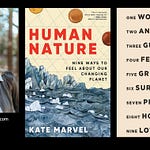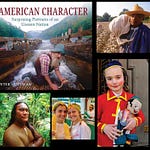I recently ran a fascinating Sustain What webcast on one of those tangled questions that are all too common in this globalizing world of consumption and extraction: how to manage growing harvests of massive blooms of the crustaceans called krill that are also fodder for reviving populations of great whales (among other wildlife).
Listen above and share this post or do the same on Facebook, YouTube, LinkedIn and X/Twitter to engage wider audiences. Also explore the rough transcript above if you can’t listen.
Krill, extraordinarily abundant in waters around Antarctica, are rich in omega-3 fatty acids that are the basis for a booming and heavily-hyped diet-supplement business and are also increasingly ending up in the manufactured meal fed to farm-raided salmon in place of ocean-caught fish.

Big ships that amount to floating factories began seining krill around that frozen continent many decades ago, led in the early days by the Soviet Union and now by Norway, with China a rising force of course. The latest report from the international Commission for the Conservation of Living Antarctic Marine Resources shows the Soviet boom and bust and the current growth:
My guests come at this issue from varied vantage points:
Joshua Goodman is a talented Miami-based Associated Press reporter who, with colleague David Keyton, led a powerful globe-spanning reporting effort on Antarctic krill, including two weeks at sea last March on a vessel operated by Sea Shepherd Global - essentially the only way to get out on the remote waters where the netting is taking place. Please explore their multimedia package. Here’s a video component:
Conor Ryan is a zoologist who splits his time between academia, conservation, education and wildlife guiding. He was on a small Lindblad cruise ship in January 2021 that came across an astonishing aggregation of fin whales - the second largest whale species - and krill seining vessels. The moment vividly illustrated the problem we discussed. He was a lead author on a paper summarizing the observations:
Commercial krill fishing within a foraging supergroup of fin whales in the Southern Ocean Ecology 104 (4), e4002
Here’s some of the video recorded that day, showing the spouting breaths of the whales with the ships in the distance - all drawn by the same krill abundance:
Nicole Bransome works on Pew’s Protecting Antarctica’s Southern Ocean project, which focuses on conserving an area that encompasses 10% of the world’s ocean through the creation of a network of large-scale marine protected areas (MPAs) around Antarctica. She wrote a recent report that is a fantastic summary of international efforts to manage this resurgent industry. Here’s a Pew video on the role of krill in the Antarctic “carbon conveyer belt”:
Aker BioMarine, the Norwegian company leading the growth in krill netting, was uanble to provide a guest for the live show (it was my fault; I’d changed the recording date and didn’t leave enough time to get them on). But they sent these talking points, several of which we address in the conversation:
The Antarctic krill fishery is recognized globally as one of the best managed in the world. It consists of a small number of vessels that catch less than 1% of the total biomass of krill.
The fishery is closely managed, monitored, and regulated by CCAMLR and the krill industry works closely with stakeholders to provide and share monitoring data to CCAMLR in support of the organization’s work to strengthen krill management.
CCAMLR has had a committee of scientists working on krill for more than 40 years. It is by now well documented that krill is among the largest unexploited marine resource in the world, that the current krill fishery is one of the most precautionary in catches relative to stock size and that whale populations currently are increasing by up to 150%, none of which indicates that fishery poses a threat to the Antarctic ecosystem.
This fishery is not experiencing a “ boom” as catches are capped at 620 000 MT until CCAMLR based on scientific information decides otherwise. “Krill fishery increasing back towards the level of the mid 1980’s” is the more accurate description of the situation, and the developments over the last 10-12 years means that exploitation rate of the krill biomass in the fishery area has moved discretely from ca 0,3% to 0,8%. In 2023 the catches were roughly 420 000 MT, hence 200 000 MT short of the upper precautionary catch limit.
The krill fishery is a transparent fishery with on-board observer present 100% of time during fishing operations. The fishery is also one of the worlds’ cleanest fisheries as the bycatch record is second to none ref. science paper published in Fisheries Management and Ecology in 2022
The incidents of incidental mortality of humpback whale, in total, 4 cases over 17 years occurring in 2021 and 2022, however unfortunate, are by evidence not systemic patterns but a consequence of malfunctioning mammal exclusion device that have since been improved. No new cases have occurred for two years and we intend to keep it that way.
The mammal exclusion device as designed by Aker BioMarine is now set as best practice in industry and part of requirements when notifying for the fishery in CCAMLR
All of the above and more are elements that contribute to the continuous MSC Certification of Aker BioMarine since 2011
The whale mortalities they describe were documented in the Associated Press report, which included photographs taken by observers from the Commission, CCAMLR.















Share this post